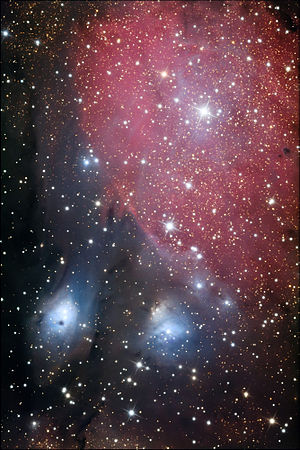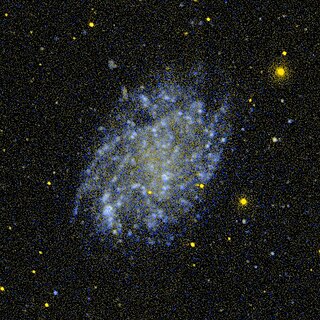
NGC 45 is a low surface brightness spiral galaxy in the equatorial constellation of Cetus. It was discovered on 11 November 1835 by the English astronomer John Herschel. The galaxy is located at a distance of 22 million light years and is receding with a heliocentric radial velocity of 466 km/s. It is located in the vicinity of the Sculptor Group, but is most likely a background galaxy.

NGC 248 is an emission nebula in the constellation Tucana. It is in the Small Magellanic Cloud. It was discovered in 1834 by the astronomer John Frederick William Herschel. NGC 248 is about 60 light-years long and 20 light-years wide

NGC 62 is a barred spiral galaxy in the constellation Cetus. NGC 62 is its New General Catalogue designation. It has an apparent magnitude of 13.2.

NGC 73 is an intermediate spiral galaxy estimated to be about 350 million light-years away in the constellation of Cetus. It was discovered by Lewis A. Swift from the USA in 1886 and its apparent magnitude is 13.7.

NGC 108 is a barred lenticular galaxy that is located at approximately 220 million light-years away in the constellation of Andromeda. It was discovered by William Herschel on September 11, 1784.
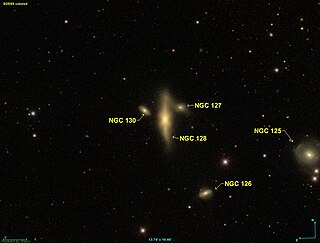
NGC 125 is a lenticular galaxy located in the constellation Pisces. It is designated as subclass Sa Ring in the galaxy morphological classification scheme. It lies approximately 235 million light-years away.
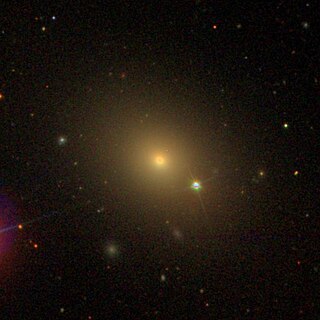
NGC 193 is a lenticular galaxy located in the constellation Pisces. It was discovered on December 21, 1786 by William Herschel.

NGC 204 is an unbarred lenticular galaxy located approximately 241 million light-years from the Solar System in the constellation Pisces. It was discovered on December 21, 1786 by William Herschel.

NGC 222 is an open cluster located approximately 210,000 light-years from the Sun in the Small Magellanic Cloud. It is located in the constellation Tucana. It was discovered on August 1, 1826 by James Dunlop.

NGC 226 is a spiral galaxy located approximately 216 million light-years from the Sun in the constellation Andromeda. It was discovered on December 21, 1786 by William Herschel.
NGC 231 is an open cluster in the Small Magellanic Cloud. It is located in the constellation Tucana. It was discovered on August 1, 1826 by James Dunlop.
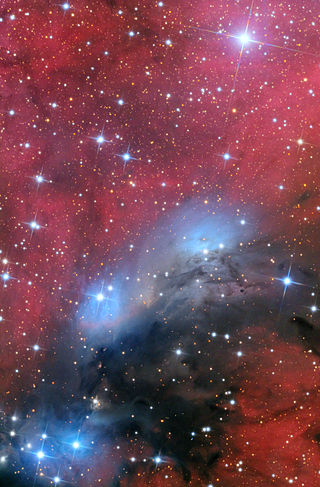
NGC 6914 is a reflection nebula located approximately 6,000 light-years away in the constellation of Cygnus, and was discovered by Édouard Stephan on August 29, 1881. Ultraviolet radiation from stars in the Cygnus OB2 association ionize the nebula's hydrogen.
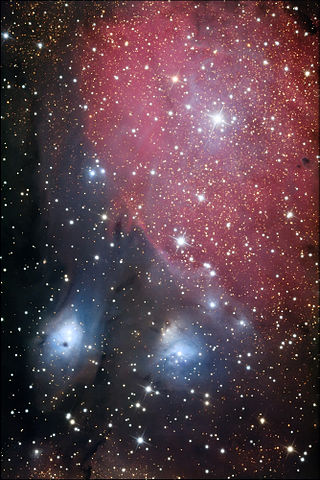
NGC 6590 is a reflection nebula in the constellation of Sagittarius. This nebula is near the similar reflection nebula NGC 6589. Both nebulas are flanked by red emission nebula IC 1284.

NGC 820 is a spiral galaxy located in the constellation Aries about 210 million light-years from the Milky Way. It was discovered by British astronomer John Herschel in 1828.

NGC 903 is a lenticular galaxy in the constellation Aries. It is estimated to be about 230 million light-years from the Milky Way and has a diameter of approximately 35,000 ly. NGC 903 was discovered on 13 December 1884 by the astronomer Edouard Stephan.

NGC 721 is a barred spiral galaxy located in the constellation Andromeda about 250 million light years from the Milky Way. It was discovered by the Prussian astronomer Heinrich d'Arrest in 1862.

NGC 1325 is a flocculent spiral galaxy situated in the constellation of Eridanus. Located about 75 million light years away, it is a member of the Eridanus cluster of galaxies, a cluster of about 200 galaxies. It was discovered by William Herschel on 19 December 1799.

NGC 4589 is an elliptical galaxy located in the Draco constellation. It is at a distance of about 108 million light-years away from the Earth. It is known by its designations PGC 42139 or UGC 7797.

NGC 1172 is an elliptical galaxy in the constellation Eridanus. It was discovered by William Herschel on December 30, 1785.
